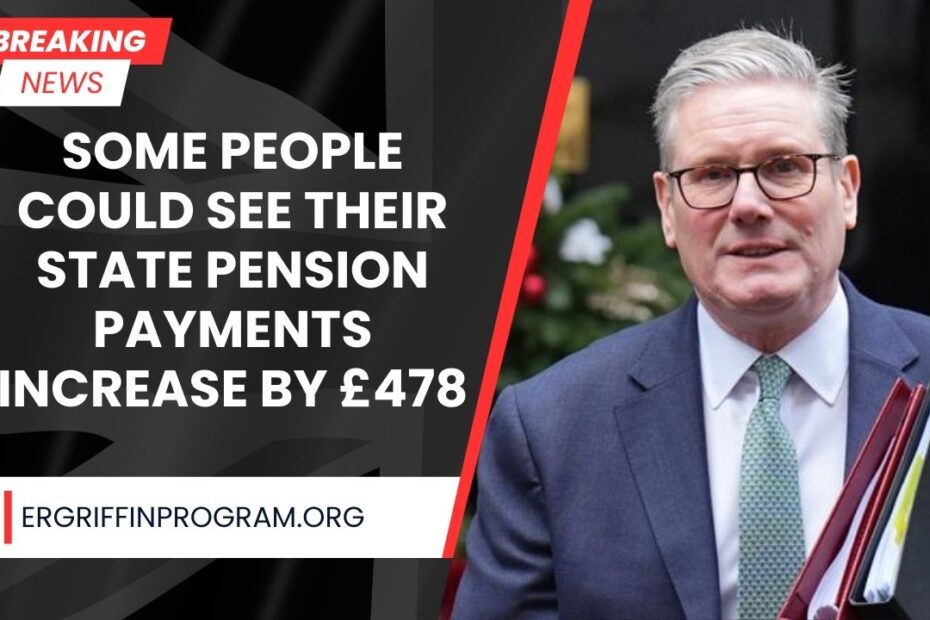From April 2025, many individuals above the State Pension age could see their weekly payments grow by up to £478 annually.
This projection follows the Bank of England’s forecast that inflation will hit 4% in September. Under the triple lock system, State Pension payments must increase each April by the highest of three measures:
- The previous September’s inflation rate
- Average wage growth
- 2.5% minimum rise
Since inflation is expected to outpace wage growth and the 2.5% baseline, it is likely to set the benchmark for next year’s pension increase.
How the Triple Lock Works
The triple lock guarantee ensures that the State Pension maintains its value against inflation and wage growth.
If inflation does reach 4%, pensioners could see their payments rise from £230.25 per week to around £239.46 per week.
This means the annual amount would jump from £11,973 to £12,451, representing an increase of nearly £500 for recipients of the new State Pension.
The Financial Impact on Government Spending
While this increase would benefit 4.5 million pensioners, The Times reports that maintaining the triple lock could cost the government an extra £2.1 billion.
This comes at a time when public finances are already under pressure.
The National Institute of Economic and Social Research has warned that tax rises may be necessary in the Autumn Budget to address a staggering £51 billion shortfall in public accounts.
Furthermore, the Office for Budget Responsibility projects that pension spending could soar from £142 billion to £182 billion by the 2029/2030 fiscal year.
Political Pressure and Policy Challenges
Former pensions minister Sir Steve Webb highlighted that the triple lock was a Labour manifesto commitment and had been used to justify changes to winter fuel payments.
He noted that breaking this pledge would be politically challenging, even though the UK’s State Pension remains modest by international standards.
He also stressed that the real challenge for all political parties is transitioning from the current, costly system to a more sustainable model—particularly at a time when the State Pension is still far from generous.
Voices from the Pensioner Community
Dennis Reed, director of Silver Voices, argued that a 4% rise would barely offset the cost-of-living crisis.
He pointed out that many pensioners are living on subsistence incomes, meaning 4% of very little is still very little.
Inflation, Interest Rates, and Living Costs
In an effort to support the economy, the Bank of England announced it would reduce interest rates to 4%—the lowest level in more than two years.
However, it warned that rising energy and food prices continue to strain household budgets.
Food inflation alone rose to 4.5% in June compared to last year, and it may increase further to 5.5% by December.
Although inflation is expected to peak at 4% in September, long-term projections suggest it could average 2.5% in 2026 and reach the target rate of 2% by 2027.
Broader Economic Concerns
These figures underscore the economic balancing act facing the government—supporting pensioners through the triple lock while managing public debt and avoiding excessive tax burdens on the working population.
Policymakers will need to carefully weigh the social importance of the State Pension against the fiscal strain it imposes.
The expected State Pension rise in April 2025 will offer some relief to older citizens, but it also highlights a looming budgetary challenge.
While the triple lock remains politically popular and provides a safety net for retirees, it comes with significant long-term costs for public finances.
With inflation still above target and food and energy prices on the rise, pensioners may find that even a £478 boost does not fully protect them from the ongoing cost-of-living pressures.
The debate over whether the triple lock can be sustained in its current form is likely to intensify in the coming years.
Frequently Asked Questions
What is the triple lock on the State Pension?
The triple lock is a UK government policy that guarantees the State Pension will rise each April by the highest of inflation, average earnings growth, or 2.5%. It is designed to protect pensioners from losing value due to rising prices or wages.
How much could the State Pension increase in April 2025?
If inflation reaches 4% in September 2024 as forecast, the new State Pension could rise by almost £500 a year, increasing weekly payments from £230.25 to around £239.46.
Why is the triple lock controversial?
While it helps pensioners keep pace with inflation, the triple lock places a significant financial burden on the government. Costs could rise by billions annually, prompting debates on whether the system should be reformed for long-term sustainability.



